Experience the elegance and tradition of the Daisho Sword Set, a perfect pairing of katana and wakizashi that embodies the samurai spirit. Each Daisho Sword Set in our collection is meticulously crafted, reflecting the harmony and precision of these iconic blades. Ideal for both seasoned collectors and new enthusiasts, owning a Daisho Sword Set offers a profound connection to Japan's rich warrior heritage. Explore our selection and find the perfect Daisho Sword Set to elevate your collection, bringing a piece of samurai history and unmatched craftsmanship into your home today.
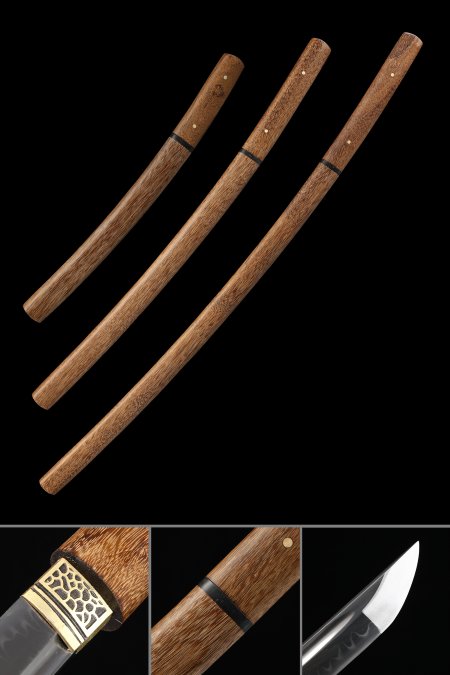
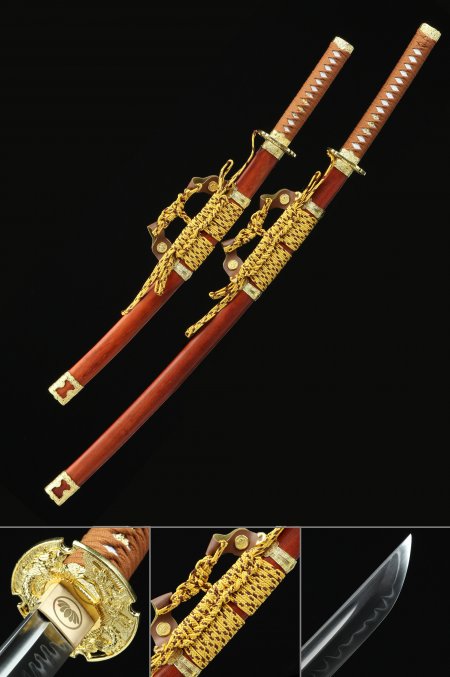
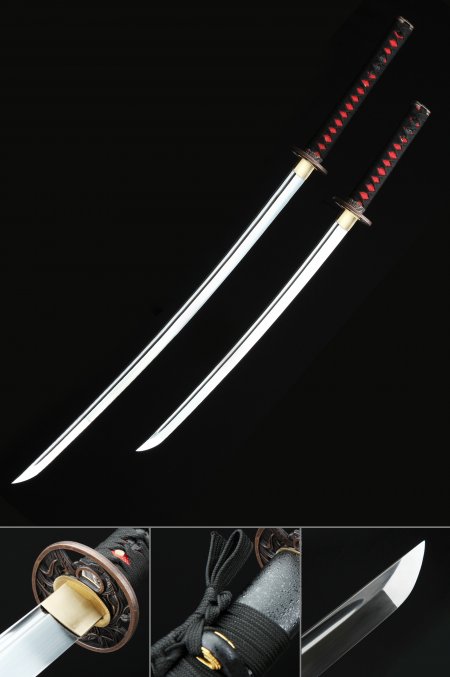
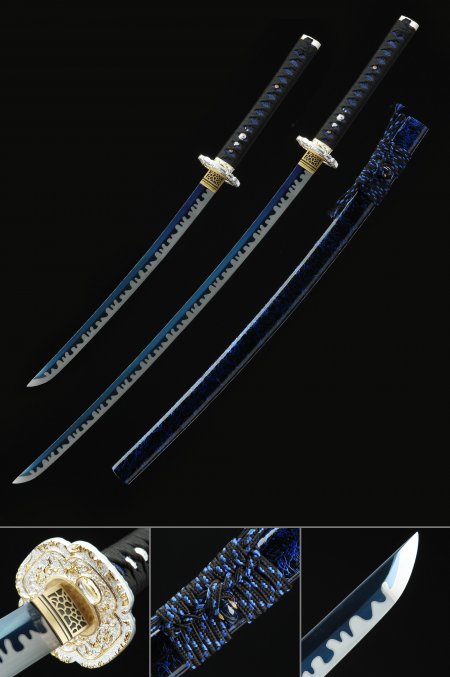
I'm verry happy with the daisho set, it is beautiful, nice , and sharp :)
 |
Daisho Set, Japanese Katana And Wakizashi Sword Set High Manganese Steel |
My Daisho set is beautiful and very well made. I also purchased the matching tango and a stand for display. The team a TrueKatana are very helpful, friendly, and willing to assist you.
 |
Daisho Set, Japanese Katana And Wakizashi Sword Set High Manganese Steel |
I bought this set as an anniversary gift to my husband and he LOVES them. Shipping took a bit longer than expected so it came a few days after our anniversary but he is so happy with how they look.
 |
Daisho Set, Japanese Katana And Wakizashi Sword Set High Manganese Steel |
Very impressed. Sharp blades, fine craftsmanship and your efficiency from placing the order to delivery was impeccable. Arrived earlier than estimated. I look forward to doing future business with you
 |
Real Hamon Japanese Daisho Set Shirasaya Katana, Wakizashi And Tanto Sword Without Tsuba 3 Set |
The Japanese Daisho Set appears to be very nice aesthetically. Will make a nice display set.
 |
Real Hamon Japanese Daisho Set Shirasaya Katana, Wakizashi And Tanto Sword Without Tsuba 3 Set |
Really happy with this set. Purchased for kendo kata (mainly demonstrations etc.), and they certainly fit the bill! The fittings are solid and the handling is excellent. An excellent choice for kata!
 |
Daisho Set, Japanese Katana And Wakizashi Sword Set High Manganese Steel |
shipped and arrived on time and very well packaged. no damage and blades were sharp and greased and wrapped in plastic film.
scabbards are beautiful and well-constructed. of the three the tanto, small blade was tight in the scabbard, but a little bit of file work corrected that issue and I put a very little bit of grease on the inside and worked the blade in and out to where it is now perfect. I applied furniture wax to the scabbard's and buffed and polished them to a high shine.
highly recommend these blades and they look great on the display stand.
 |
Real Hamon Japanese Daisho Set Shirasaya Katana, Wakizashi And Tanto Sword Without Tsuba 3 Set |
I got everything as advertised and in excellent condition! It even arrived in a very short time for international shipping! Pleasantly surprised by this company and will most likely order again.
 |
Real Hamon Japanese Daisho Set Shirasaya Katana, Wakizashi And Tanto Sword Without Tsuba 3 Set |
I Love this daisho, I’ve always wanted a set of swords like these, finally I have them. The next set I buy will be the ghost of Tsushima hope to have that set by mid summer. Thank you for making an affordable daisho.
 |
Daisho Set, Japanese Katana And Wakizashi Sword Set High Manganese Steel |
Great purchase, I would only add that it was unclear if you were using USPS or someone else like UPS. This would be a problem for me since the USPS doesn't deliver to address per my request. (They would deliver to my P.O.Box) I'm crossing my Katana's and hoping my order is delivered via someone other than USPS.
Great products!
 |
Daisho Set, Japanese Katana And Wakizashi Sword Set High Manganese Steel |
I was extremely impressed with the craftsmanship and look of the items
 |
Daisho Set, Japanese Katana And Wakizashi Sword Set High Manganese Steel |
A very nice product for a relatively low price. The most obvious shortcoming of the swords isn't very obvious at all, and that is the rough interior of scabbards. Otherwise, the craftsmanship is clean. Shipment was handled well, and packaging thorough, although the blades were overly oiled and some oil had made it's way to the wood handles. The only annoyance has been repeated emails pestering me for this review.
 |
Real Hamon Japanese Daisho Set Shirasaya Katana, Wakizashi And Tanto Sword Without Tsuba 3 Set |
I’ve handled real Japanese swords before and these are the real deal. They are so beautiful in person. They are nearly 8 millimeters thick at the widest part. They feel very sturdy and strong.
So far I’m very satisfied
 |
Real Hamon Japanese Daisho Set Shirasaya Katana, Wakizashi And Tanto Sword Without Tsuba 3 Set |
Honestly I was surprised by the quality. It's actually really sturdy and all the rope is snug to the handle and scabbard. The blade is also really nice. I definitely got what I paid for so when you're looking for your sword, just know you are gonna get what you pay for. 300-400 is probably the best range to look for a great budget sword.
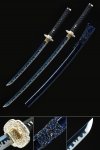 |
Daisho Set, Katana Sword Set - Katana & Wakizashi Sword High Manganese Steel With Blue Blade |
I had bought this entertainment center while living in Okinawa back in the early 90s and finally repurposed it as a curio display. The Daisho set matches perfectly with the decor and aside from their beauty, they’re deadly sharp if needed as a weapon.
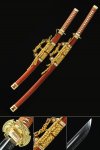 |
Daisho Set, Japanese Tachi Odachi Katana And Wakizashi Sword Set T10 Folded Clay Tempered Steel |
Everything about ordering from TRUEKATANA was excellent. The product quality, communications, delivery, and condition received exceeded my expectations. I will be ordering from them again. DeeBee
 |
Daisho Set, Japanese Tachi Odachi Katana And Wakizashi Sword Set T10 Folded Clay Tempered Steel |
overall quality item, the sheath can be better. But definitely worthy for the price tag.
 |
Daisho Set, Japanese Katana And Wakizashi Sword Set High Manganese Steel |
Originally thought this could be a sketchy website but the swords came in 2 weeks like they said and were real steel. They weren't as sharp as I was expecting but I still managed to cut myself lol. They have held up pretty nicely since I got them and they are fun to play with ! though the katana is a bit too long for me, they are still fun to wear and display. Definitely recommend !
 |
Daisho Set, Japanese Katana And Wakizashi Sword Set High Manganese Steel |
Looks like it's worth more than I paid for. Thank you!
 |
Daisho Set, Japanese Katana And Wakizashi Sword Set High Manganese Steel |
Misplaced my order but customer service was very nice and understanding and sent the right one. It is well made and very stylish 9.5/10.
 |
Daisho Set, Japanese Katana And Wakizashi Sword Set High Manganese Steel |